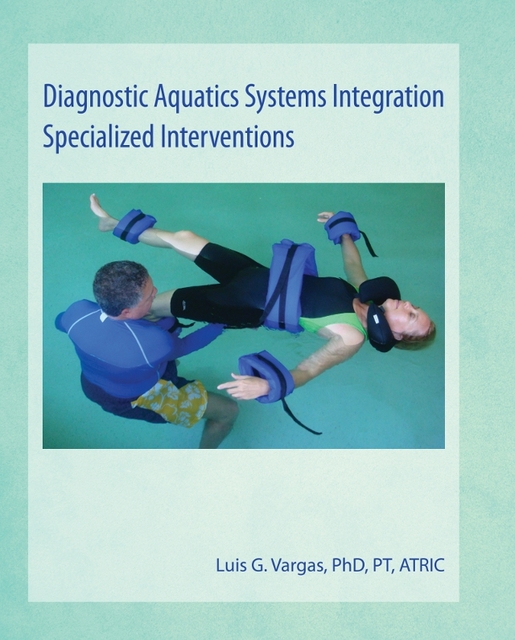Description
Diagnostic Aquatics Systems Integration: Specialized Interventions focuses on seven specific clinical areas and includes evidence-based connections to strengthen the clinical value of the specialized interventions addressed.
The seven protocols contained in DASI Specialized Interventions
The Aquatic Pain Inhibition Protocol (APIP)
The Aquatic Sacroiliac Dysfunction Protocol (ASID), in collaboration with Flavia E. Bayron
The Adapted Pediatric Wassertanzen Protocol, in collaboration with Judith Alvarado Bradley
The Aquatic Spasticity Inhibition Protocol (ASIP)
Biomechanical and Clinical Applications of Ai Chi, in collaboration with Ruth Sova
The Therapeutic Aquassage Protocol, in collaboration with Flavia E. Bayron
The Aquatic Lumbopelvic Stabilization (ALSP) Protocol
The Diagnostic Aquatics Systems Integration (DASI) Theory encompasses the diagnostic and therapeutic foundations for aquatic rehabilitation of orthopedic, neurological, pediatric, geriatric, and cardiopulmonary pathologies. The DASI theory helped create a diagnostic evaluation instrument that enables the aquatic therapist to formulate a functional diagnosis so that objectives can be established and a comprehensive aquatic rehabilitation plan of care can be designed and implemented. DASI also provides a basis for the biomechanical, physiological, and neurophysiological principles that underlie the science of aquatic movement. It is a systematic problem-solving approach that allows the trained aquatic therapist to make educated decisions and modifications to the techniques, activities, and interventions that are indicated for specific clinical problems.
Luis G. Vargas, PhD, PT, ATRIC
Since 1993 Dr. Luis Vargas has been clinically devoted to aquatic physical therapy. He pursued advanced training certification in specialized interventions and protocols. Dr. Vargas also formulated and developed the Diagnostic Aquatics Systems Integration Theory which served as a basis for the design of his Pre-Aquatic and Post-Aquatic Functional and Systems-Oriented Assessment as well as the aquatic therapy interventions.
Reviews
Dr. Luis Vargas’ manual on specialized interventions for Aquatic Therapy outlines in great detail the application of therapeutic practices for populations that include sacroiliac dysfunction, spasticity, and spinal disorders. His book, Diagnostic Aquatics Systems Integration (DASI: Specialized Interventions is a pioneering effort to document assessment and treatment protocols for those populations mentioned. It includes one chapter each referencing pediatric interventions and aquatic massage. The chapter on Ai Chi actually takes a therapist skilled in the practice to a more clinical application of its modalities.
Delving into the "meat" of the book, aquatic therapists will benefit largely from internalizing the concepts. Key elements resonate throughout the text like the principle objective for a therapist to first address the reduction of a patient’s pain BEFORE improving his/her function.
In the assessment of pain, Dr. Vargas presents his own scale. The DASI Functional Activity Pain Scale is quite comprehensive in its description of ten levels of pain and it provides clear delineations of subjective analyses of functional impairment and intensity of the correlating pain. Thus, a subjective analysis becomes more standardized and quantifiably significant. With a highlighter in hand, the aquatic therapist can pinpoint the pain and functionality parameters and condense the two-page table into a handy 3 x 5 index card pocket reference. It is, in this therapist’s estimation, an invaluable tool for patient assessment and should be adopted as an industry standard.
Throughout the book, concise written descriptions of practical applications accompany photographic depictions of protocols applied. This book is a therapist’s complex and comprehensive manual that deserves repeated reading and note taking for internalizing the defined practices. A one-time read and highlight may create the background for the therapist to recall, but the practice and application will require case-specific re-reading and condensing to personalize for each client’s particular needs.
Overall, this book is a wonderful reference for the serious aquatic therapist working closely in a healthcare team to provide an integrated, holistic approach to pain management and functional restoration for those special populations.
Felecia S. Fischell
Aquatic Exercise and Therapy Instructor
ATRIC, AEA, WSI SSI certified






